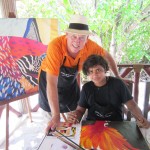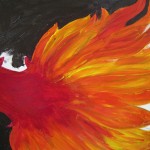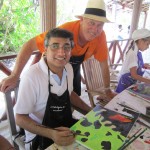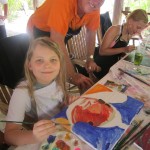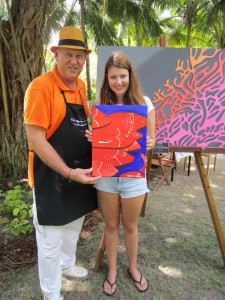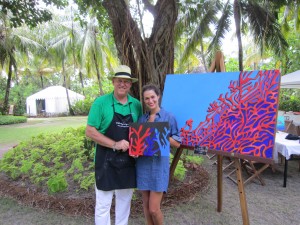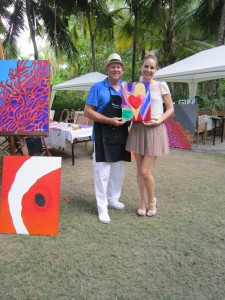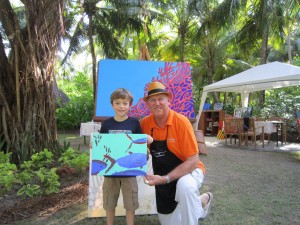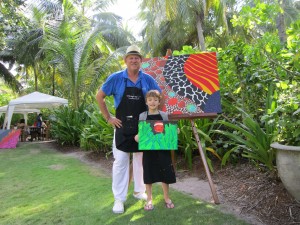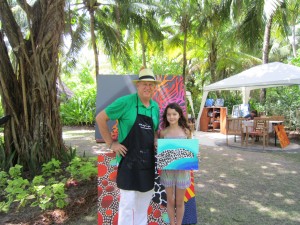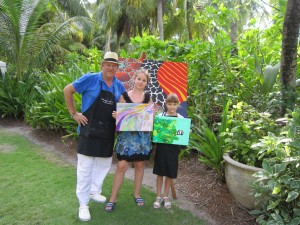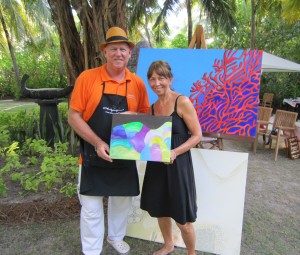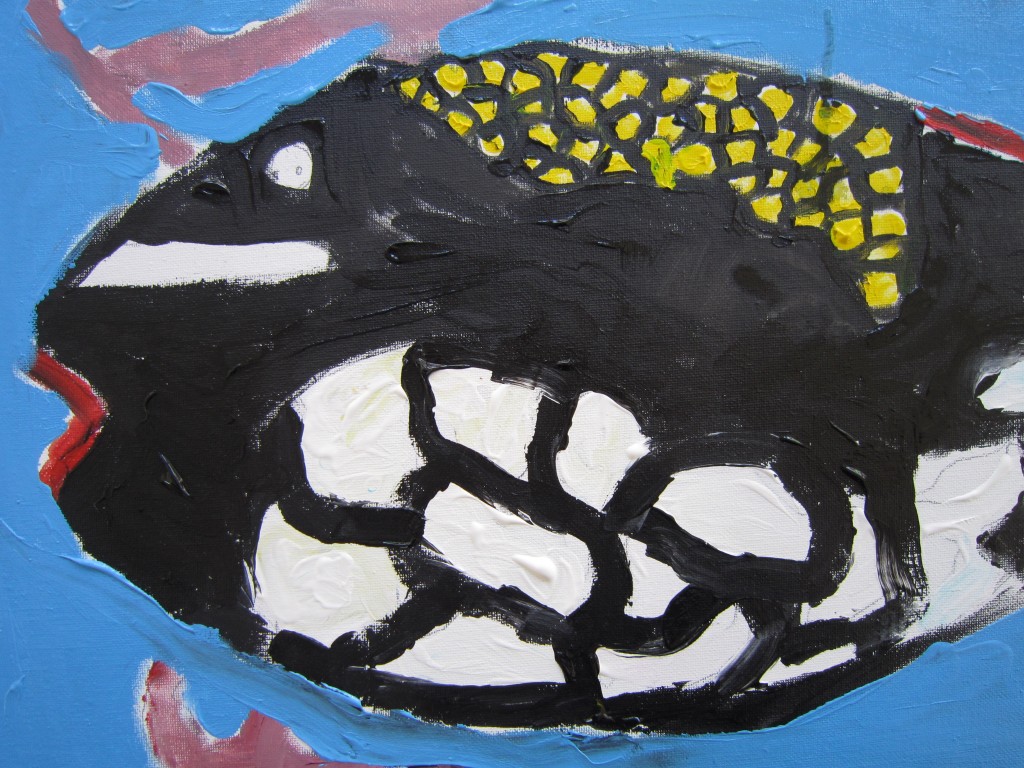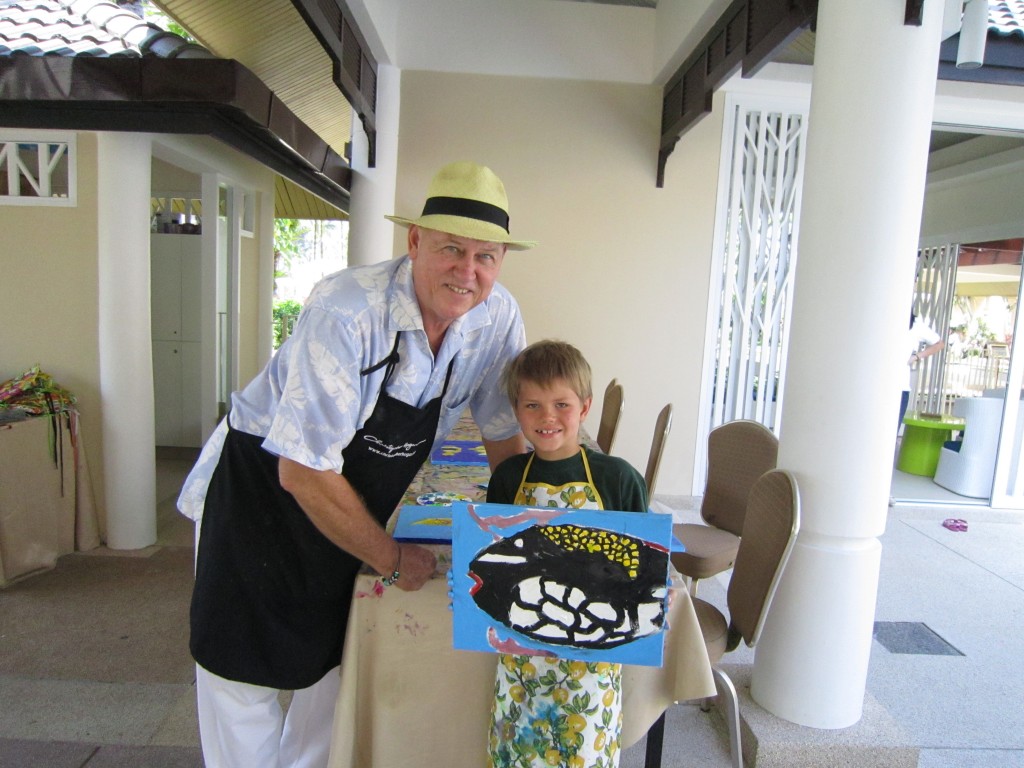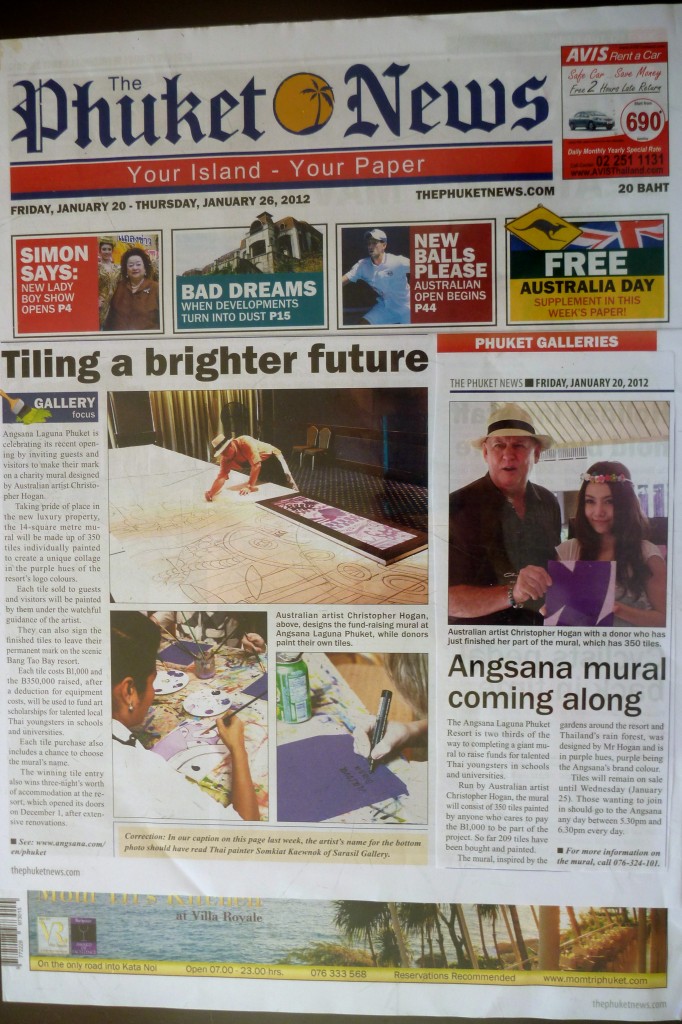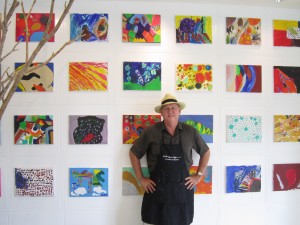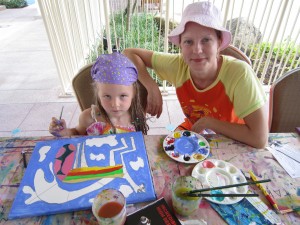Christopher Hogan’s art classes
Here at One&Only Reethi Rah Maldives
Nora, O&O Reethi Rah’s exuberant Guest Services Manager and her two young nieces joined my art class under the coconut trees and so I took the opportunity to teach them how to paint in the bold colours and patterns of the marine life that they had seen here on the reefs and waters of the Maldives.
On reflection, these three young Russian women paintings bought to my mind a 20th Century female Russian Cubist artist, Liubov Popova and here is a short Art History lesson that I would like to share with you. Her style is strong and the abstract paintings she produced reduced the cubist style to a basic language of squares and rectangles, and is in a way, similar to the style that I teach my students. The coloured diagonal shapes suggests movement and also a sense of balance. The modelling of the shapes suggests a light source from outside the frame.
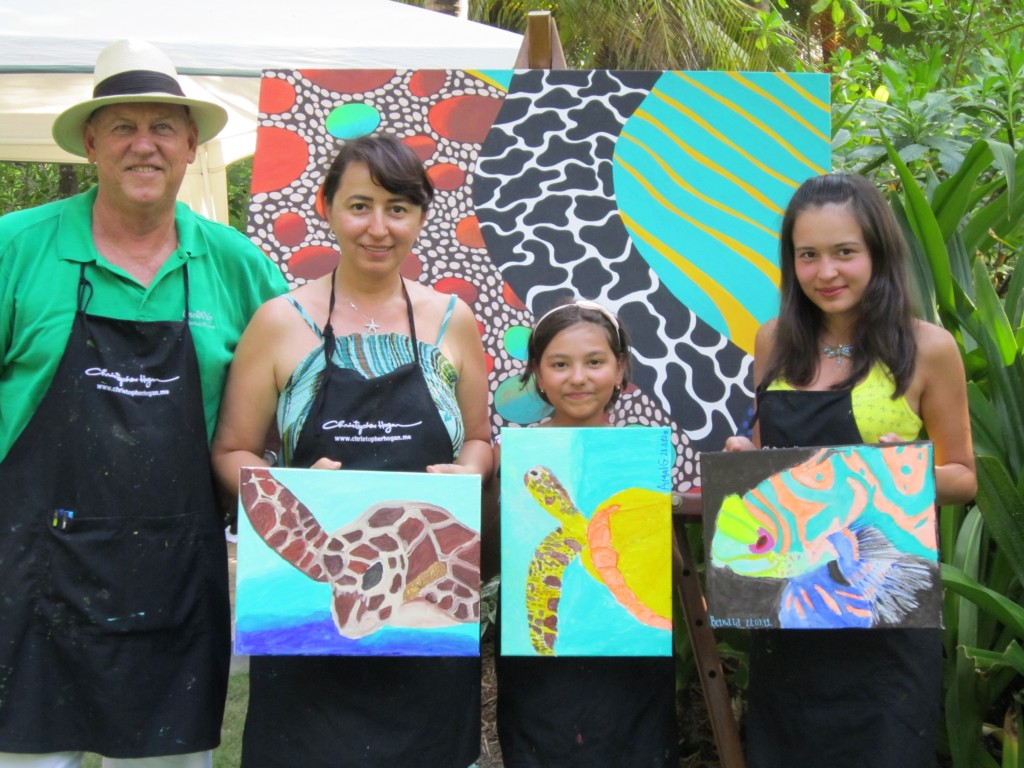
Popova, Liubov (1889–1924)
Talented Russian artist of the first decades of the 20th century who absorbed the currents of Impressionism, Cubism, Futurism, Suprematism, and Constructivism, and turned her energies to practical forms of art to further the goals of the Bolshevik Revolution. Name variations: Lyubov. Pronunciation: Lyoo-BOFF Pa-POE-va. Born on April 24, 1889, in the village of Ivanovskoe, near Moscow; died of scarlet fever in Moscow on May 25, 1924; daughter of Sergei Maksimovich Popov (a Moscow merchant) and Liubov Vasilievna Zubova Popova; attended secondary schools in Yalta and Moscow, 1902–06; studied art formally under private teachers, 1907–11; married Boris Nikolaevich von Eding (a Russian art historian); children: one son.
Moved to Moscow (1906); first visited Italy (1910); toured ancient Russian cities (1911); set up studio in Moscow (1912); visited Paris and rendered first purely Cubist painting (1913); visited Paris once more, outbreak of World War I, exhibited painting in Moscow (1914); began association with Malevich (1915); exhibited her first non-objective paintings (1916); death of her husband, contracted typhus, joined Council of Masters (1919); taught at Higher State Artistic and Technical Studio (1920); shifted interests to utilitarian art (stage design, textiles, 1921); posthumous exhibit of her work in Moscow (1924–25).
Selected works:
Still Life: Milk Pitcher; Plein Air (Costakis Collection, Athens, 1908); Italian Still Life (Tretiakov Gallery, Moscow, 1914); Birsk (Guggenheim Museum, New York, 1916); Painterly Architectonics (Tretiatkov Gallery, Moscow, 1916–17); Work uniform design for Actor No. 5 (Private Collection Moscow, 1921); set design for The Magnanimous Cuckold (Tretiakov Gallery, Moscow, 1922).
Liubov Popova played a major role within the lively Russian artistic world of the early 20th century. It was an artistic scene in which competing groups sometimes operated under their own dynamics and sometimes responded to intense political experiences. She joined those who made the passage to Cubism and abstract art, and she entered the group of artists who sought to serve the ideals of the Bolshevik Revolution. Nonetheless, in the view of leading critics, her work retained a notable originality. In a 1962 pioneering study of Russian avant-garde art, Camilla Grayclaimed: “After Tatlin and Male-vich, Popova was the most outstanding painter of the post-1914 abstract school in Russia.” Art historian Magdalena Dambrowski cited “the high quality of her achievement,” calling her “a versatile, innovative artist who drew on diverse influences … and made them the basis of her own distinctive means of expression.” Popova “was tall,” wrote her friend and fellow artist Vera Mukhina ; “she had a good figure, marvelous eyes and luxuriant hair.
http://en.wikipedia.org/wiki/Lyubov_Popova


![]() 6 reviews
6 reviews Reviewed October 15, 2012
Reviewed October 15, 2012



